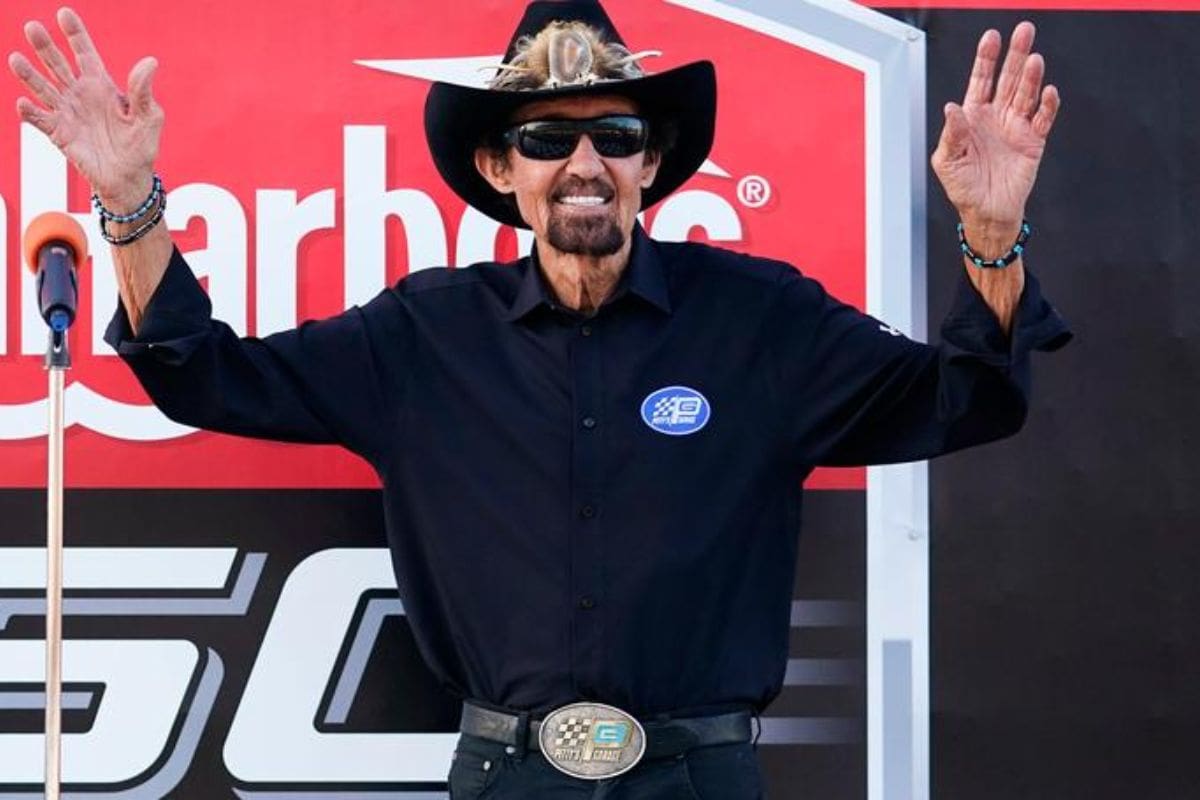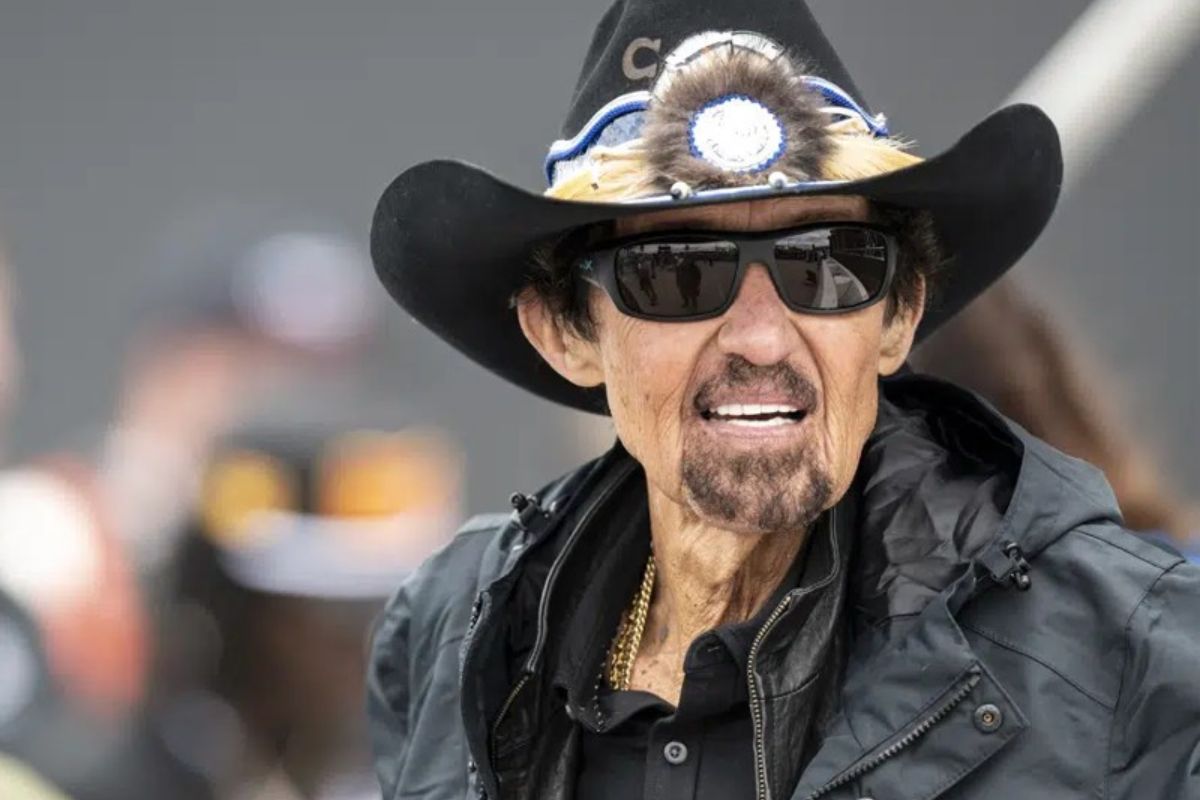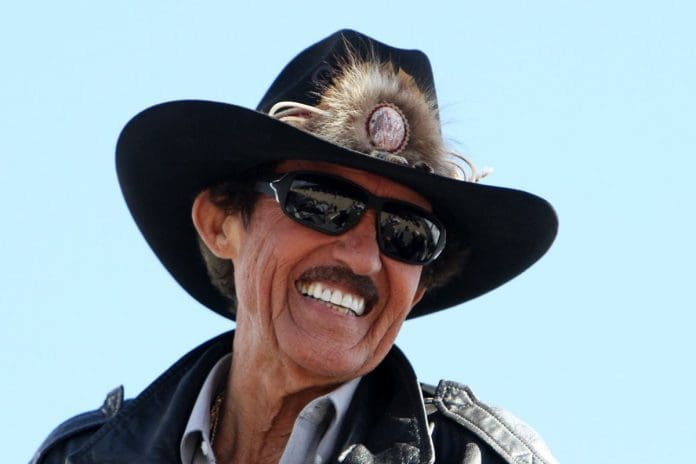Richard Petty Reveals Darlington: In a recent discourse on the esteemed legacy of Darlington Raceway, NASCAR icon Richard Petty highlighted its irreplaceable role in the annals of motor racing history. Characterized by its challenging layout and unique demands, Darlington not only tests the mettle of drivers but also continues to be a pivotal arena where NASCAR legends are made and remembered. Petty’s reflections bring forth intriguing considerations about how tradition and challenge interplay to forge a deeper connection within the racing community.
Key Takeaways
- Richard Petty highlighted Darlington Raceway as a cornerstone of NASCAR’s heritage.
- He emphasized Darlington’s unique challenges as a badge of honor for drivers.
- Petty noted the raceway’s demanding nature tests a driver’s skill and resilience.
- Darlington’s historical significance in NASCAR was showed by Petty’s reverence.
- He described the raceway as a proving ground that represents the spirit of NASCAR.
Darlington Raceway: A Special Place for NASCAR Legends
Darlington Raceway, often revered as a proving ground, holds an esteemed position in NASCAR’s most legendary venues. This track, notorious for its unique, egg-shaped oval design, presents a formidable challenge, distinguishing itself with a combination of tight turns and abrasive asphalt. The distinct configuration, a result of the need to preserve a minnow pond during its construction in 1950, imposes a relentless test on the technical skills and adaptive strategies of drivers.
The raceway’s reputation is not merely historical but continues to be shaped by the narratives of modern legends like Jeff Burton and Richard Petty. Petty, a figure synonymous with NASCAR glory, has often highlighted Darlington’s role not just as a race track but as a crucible where racing mettle is tested and legends are forged. The track’s abrasive surface famously accelerates tire wear, demanding exceptional skill in tire management and race pacing. This attribute alone can separate the seasoned veterans from the less experienced competitors, making every race a dramatic spectacle of endurance and strategy.
“I run down there for years and years I finally won three races in two years, and then none before that or none after. But I always like the Darlington and it suited the way I drove. I just didn’t have a lot of good luck there. But again it was so demanding not just on the driver but it was so demanding on the car. The grooves changed as the cars changed so they are a completely different Groove and stuff now than what we used to run. Just because of the way the cars are so people had to learn the racetrack but then they got to learn the cars to fit that racetrack. So, Darlington is always going to be a very important part in any driver’s history.” – (petty)
Moreover, the track has been dubbed ‘The Lady in Black,’ a sign of its notorious tendency to ‘stripe’ cars with black marks as they brush against its walls. This, coupled with its nickname ‘The Track Too Tough to Tame,’ represents the respect and trepidation it inspires in the hearts of drivers. It’s these characteristics that endear Darlington to figures like Burton, who see it as a touchstone for excellence and a landmark where NASCAR’s rich heritage and ongoing saga continue to evolve.

Darlington: The Present-Day Daytona
Often compared to the iconic Daytona for its prestige and challenge, Darlington Raceway stands as a monumental test for NASCAR drivers today. The track’s unique configuration demands an exceptional level of skill and adaptability, aspects that racing legends like Jeff Burton and Richard Petty have emphasized in their discussions about its significance in motorsports.
According to Burton, Darlington is unparalleled in its ability to expose the intricacies of a driver’s decision-making process. The necessity for drivers to continuously switch lanes and adjust their strategies in real-time makes it a spectacle not just of speed, but of tactical skills.
“To me what makes Darlington great for drivers and fans is that it’s really hard it’s a very difficult Racetrack. And you can see it, you can see the drivers right against the wall. You can see them having to change lanes and it’s just and it’s always changing.” – (Burton)
“And as it’s changing from a driver you’re having to make those adjustments. But the fans can see the driver making that adjustments. And I think that track more than anywhere else shows how hard it is to drive a race car.” – (Burton)
Petty’s comparison of Darlington to Daytona shows its importance in a driver’s career. Winning at Darlington is not just about speed; it’s about mastering a track that is as unforgiving as it is historic. This raceway does not merely challenge the physical capabilities of the drivers but also tests their mental resilience and strategic thinking. The continuous adjustments required on this track make each lap a critical assessment of a driver’s ability to read the race and react accordingly.
“So you got to look at Darlington, that was the first Super Speedway that cup started running the deal was that it was the biggest race of the year. So like Daytona is now it was then and anybody you talk to in racing they want to win Darlington. They want to win Daytona naturally but Darlington’s probably next on their list just because it’s such a tough racetrack you know.” – (Petty)
Challenges of the Darlington Raceway
Building on its reputation as a monumental test for NASCAR drivers, Darlington Raceway presents a set of unique challenges that further solidifies its status in motorsports. Known colloquially as ‘too tough to tame,’ this track’s distinctive, egg-shaped layout poses a formidable test. Unlike most circuits that maintain a consistent curve radius, Darlington’s asymmetrical design features tighter turns on one end and more sweeping arcs on the other. This irregular configuration demands acute adaptability and precise car setup from teams, who must achieve a delicate balance between tight cornering and high-speed stability.
Further complicating matters is the track’s notoriously abrasive surface. This characteristic accelerates tire degradation, compelling teams to strategize meticulously around tire wear. Throughout a race, the evolving grip levels necessitate continuous adjustments to driving style and pit stop strategy, presenting a dynamic challenge that is as mentally taxing as it is physically demanding.
The surface also contributes to the track’s nickname, ‘The Black Lady,’ a reference to the dark tire rubber that accumulates on the asphalt. This buildup not only alters the track’s grip characteristics as the race progresses but also visually marks the ideal racing line. Drivers must interpret these subtle cues to optimize their path, all while combating the physical toll of managing a vehicle on the edge of adhesion.

Importance of Winning at Darlington
Why does a victory at Darlington Raceway hold such esteemed value for NASCAR drivers? The answer lies deeply rooted in the track’s storied reputation and the formidable challenges it presents. Known for its relentless demands on vehicle and driver, Darlington does not forgive easily, making a win here a notable badge of honor in the racing community.
The importance of winning at Darlington extends beyond mere personal achievement. It is a historical accolade, as victories at this prestigious track are often seen as milestones in a driver’s career. The raceway’s iconic status is amplified by its history of hosting some of the most memorable races in NASCAR, thereby embedding itself as a cornerstone in the sport’s legacy. A win at Darlington is not just a win; it’s an entry into a revered hall of tradition, celebrated by peers, enthusiasts, and experts.
Darlington: A Track Like No Other
Despite its seemingly traditional oval shape, Darlington Raceway presents a series of unique challenges that distinguish it from any other circuit in NASCAR. Known as ‘The Lady in Black,’ Darlington’s track layout is famously asymmetrical, with turns 1 and 2 differing markedly in radius and banking from turns 3 and 4. This irregularity demands exceptional skill and adaptability from drivers, making mastery of the track a revered accomplishment within the sport.
The raceway’s surface compounds these physical challenges. Constructed with a rough, abrasive asphalt, tires degrade at an accelerated pace, forcing teams into strategic pit stops and tire management that can make or break a race. This unpredictability adds strategic depth unseen in many other NASCAR venues.
Historically, Darlington has been a proving ground for NASCAR’s elite. Its inaugural race in 1950 set the stage for what would become one of the most storied venues in American motorsports. Winning at Darlington is not just a matter of crossing the finish line first; it is a battle against the track itself, a grueling test of endurance and cunning that has humbled many of the sport’s giants.

News in Brief: Richard Petty Reveals Darlington
Darlington Raceway’s unique characteristics and historical significance render it a pivotal element in NASCAR’s legacy. Richard Petty’s recognition of Darlington as a sacred venue highlights its role in testing the mettle of racing legends.
The track’s continued relevance and the prestige associated with victories there show its unparalleled status in the motorsports community. Darlington Raceway remains a symbol of heritage and challenge, preserving its esteemed position within the NASCAR circuits.
Our Reader’s Queries
Q: Has Richard Petty ever won at Darlington?
A: In the illustrious year of 1967, he conquered the hallowed grounds of Darlington not once, but twice, marking a chapter of unparalleled dominance. With an awe-inspiring 27 victories out of 48 races that season, his feat remains unmatched, etching his name in racing lore.
A: Richard Petty, revered as “The King,” embodies the epitome of racing excellence, earning his moniker through unparalleled achievements and unwavering respect across all motorsports. As a second-generation driver, his legacy transcends eras, setting the benchmark for success in the Stock/Grand National Era and shaping the NASCAR Winston Cup Series like no other.
Also Read: Richard Petty on Darlington’s Legacy “The Track Too Tough to Tame”


